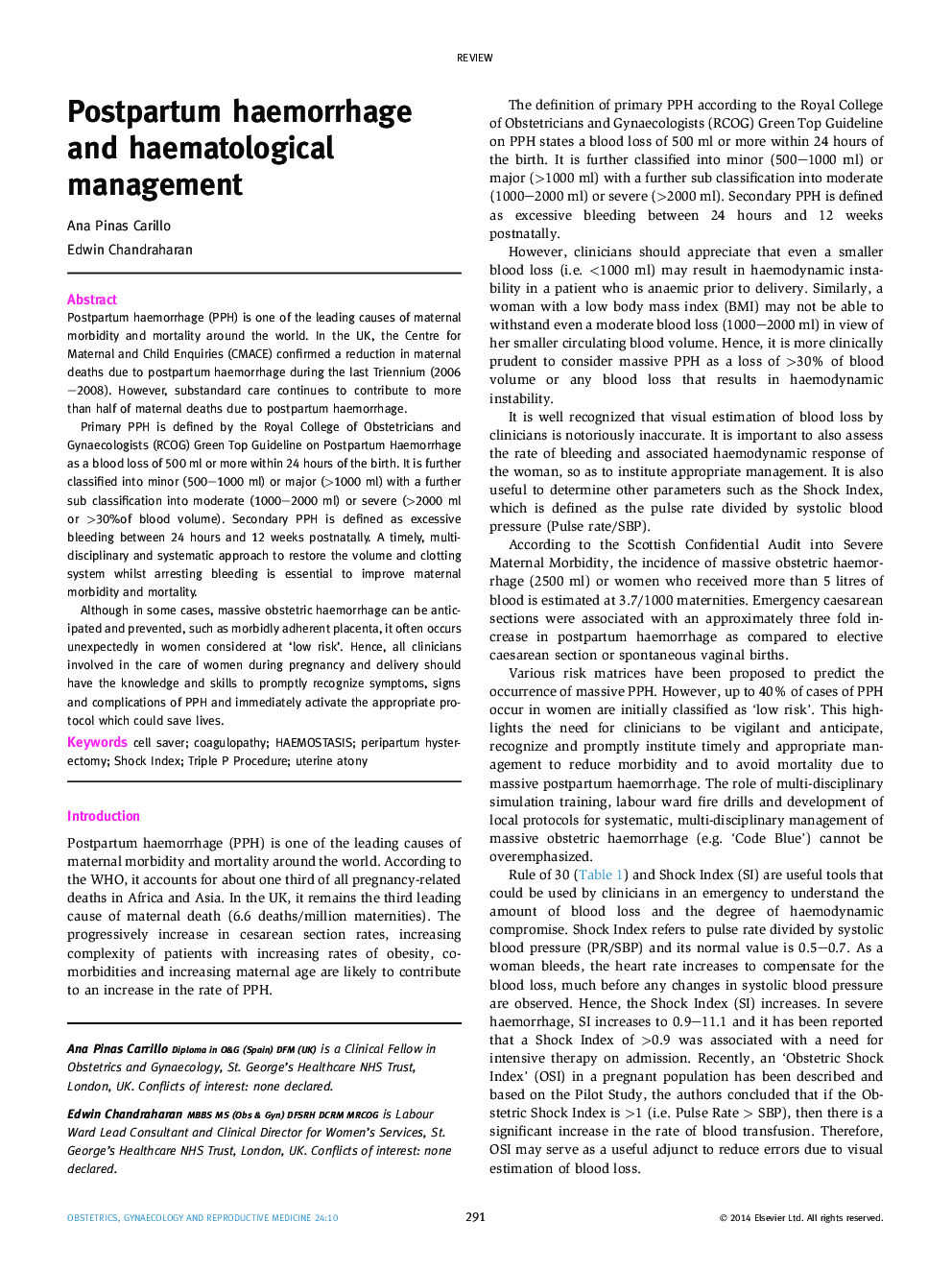| Article ID | Journal | Published Year | Pages | File Type |
|---|---|---|---|---|
| 3966636 | Obstetrics, Gynaecology & Reproductive Medicine | 2014 | 5 Pages |
Postpartum haemorrhage (PPH) is one of the leading causes of maternal morbidity and mortality around the world. In the UK, the Centre for Maternal and Child Enquiries (CMACE) confirmed a reduction in maternal deaths due to postpartum haemorrhage during the last Triennium (2006–2008). However, substandard care continues to contribute to more than half of maternal deaths due to postpartum haemorrhage.Primary PPH is defined by the Royal College of Obstetricians and Gynaecologists (RCOG) Green Top Guideline on Postpartum Haemorrhage as a blood loss of 500 ml or more within 24 hours of the birth. It is further classified into minor (500–1000 ml) or major (>1000 ml) with a further sub classification into moderate (1000–2000 ml) or severe (>2000 ml or >30%of blood volume). Secondary PPH is defined as excessive bleeding between 24 hours and 12 weeks postnatally. A timely, multi-disciplinary and systematic approach to restore the volume and clotting system whilst arresting bleeding is essential to improve maternal morbidity and mortality.Although in some cases, massive obstetric haemorrhage can be anticipated and prevented, such as morbidly adherent placenta, it often occurs unexpectedly in women considered at ‘low risk’. Hence, all clinicians involved in the care of women during pregnancy and delivery should have the knowledge and skills to promptly recognize symptoms, signs and complications of PPH and immediately activate the appropriate protocol which could save lives.
